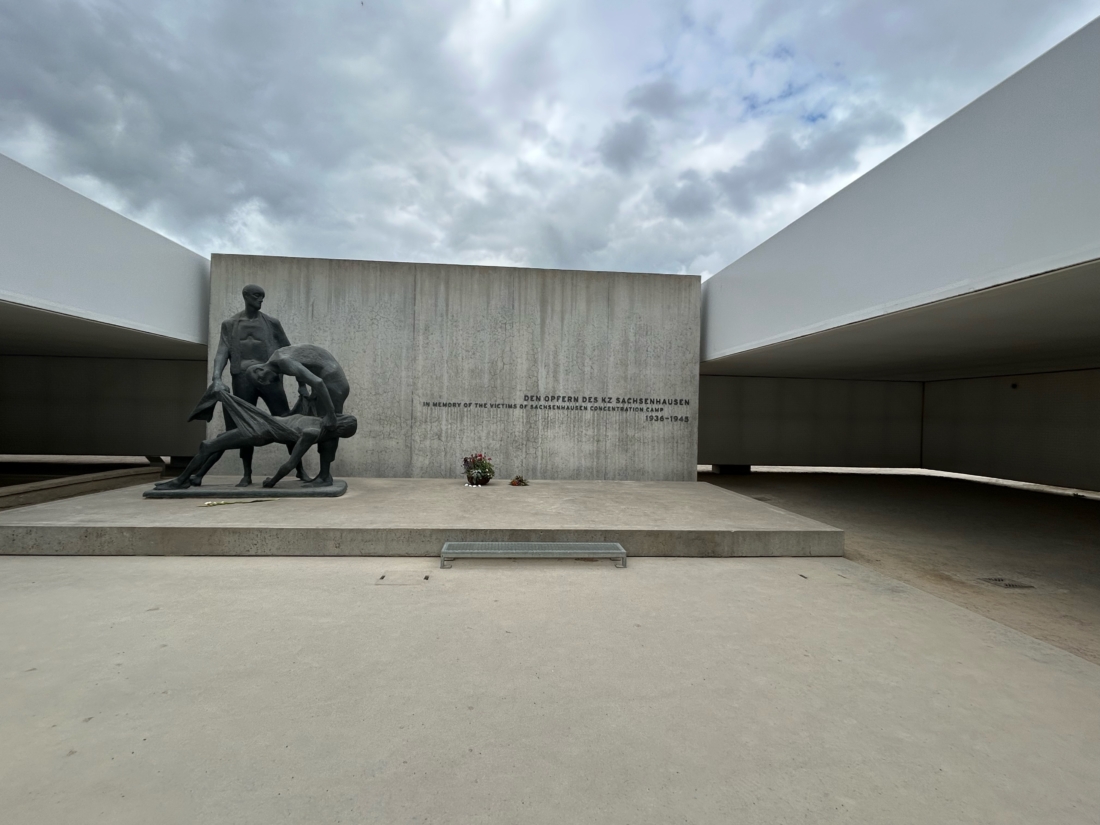Thursday, July 20th- Remembrance & Beyond
Today we toured the Memorial and Museum at the former concentration Camp Sachsenhausen. Going into the day I felt uneasy, and unsure of what to expect. This was the first time that I had visited a concentration camp.
Our tour guide explained to us that the Nazi’s needed a camp, and choose the site for Camp Sachsenhausen for its close proximity to Berlin that was accessible by public transportation. During the Summer of 1936, Camp Sachsenhausen was built. From 1936 until 1945 two hundred thousand people were encamped here, of which 20,000 were Jews.
Camp Sachsenhausen was a labor camp and S.S. training site. What made Camp Sachsenhausen unique was that it also had a prison on site for political criminals. These political criminals were not just Jews but people who disagreed with the Nazi regime.
This camp was primarily composed of men whom were categorized by society and race. They believed that you could change someone’s societal status but you couldn’t change someone’s race. These men were forced to make bricks and then later ammunition.
Back to the tour, at the entrance of the camp you see a watch tower with an iron gate with the words” Arbeit Macht Frei” in German which translates in English to “ Work makes you free”. Oh the irony behind that! Our tour guide said that building was referred to as “ Tower A” and that we would be seeing multiple buildings on our tour which would end with “Tower Z”.
Inside of the camp looks similar to a modern day prison where you have buildings surrounded by a brick wall with an electrical fence. Everyone corner had a watch tower and in the center of the camp was empty space where the prisoners were forced to have roll calls daily. These daily roll calls were used to control the workers.
We saw a re-built version of a barrack that the workers would live in. Camp Sachsenhausen had a fire in 1992 which destroyed much of the original structures. I have to admit that my first impression of the camp wasn’t a strong one, I kept thinking that I should feel some sort of emotion, and I wasn’t.
It wasn’t until we reached “ Tower Z” the crematorium, until it really touched me. This replica of what would have been the crematorium had actual ovens displayed. They’re also a beautiful memorial sculpture located in the same space. As a group we recited the Mourners Kiddish as well stood in a circle. That was a very touching moment.
Afterwords, I went to take a look at the information plaques where there was a picture of people’s teeth in a pile. The caption said something to the extent that after the victims had been killed their teeth had been extracted for the gold fillings. It was at that particular sight that I got emotional.
I could not fathom the inhumanity that not only were these people were killed, but that physical parts of them were taken away too. The Nazi’s were absolutely ruthless in their actions. The pictures shown a brutal honesty of the horrors that occurred there.
Even though it was hard to see, I appreciated the realness of those images. It is a tragic event that we must never forget or try to sugarcoat. It is my hope that the younger generations learn from the preservation of the artifacts from the Holocaust so that it doesn’t happen again.
In conclusion, even though it was a tough day to mentally process being at a place where such horror occurred. I am grateful for the opportunity to see it firsthand. I know that for the rest of my life I will share the experience I had as a constant reminder to stand up if you see people being treated wrongfully.


